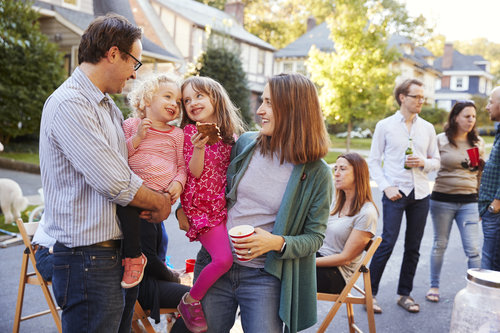Imagine a world in which your next-door neighbor not only is your best friend but de facto babysitter, your go-to source for borrowing eggs or cups of sugar and dinner companion when you’re home alone.
Seems like a fantasy land, right? Or, at the least, an idyllic depiction of life found only on TV. But a recent increase in popularity of cohousing around the country suggests many crave a closeness and sense of community with their neighbors.
In a cohousing community, residents own their own homes, whether attached or single family, which have traditional amenities. The thing that sets these communities apart from traditional housing is the typical common house — where residents often gather for dinner, do laundry or hold recreational events — as well as an abundance of shared parking, walkways, open space and gardens. And when it comes to maintenance of the spaces, either private or communal, residents divvy up the duties and share tools and resources like lawnmowers.
According to the Cohousing Association of the United States, there are 148 completed cohousing communities around the country, with 17 more being built and 140 in the early stages of planning.
And the reason for the increased interest in cohousing is quite basic: the rise of smartphones and apps may be making life easier, but also more solitary. The Cohousing Association of the United States cited reports that show people are happier, healthier and live longer with daily social interactions and connections.
Moreover, loneliness is considered a health hazard that is reaching epidemic levels these days, with the number of Americans who say they’re lonely doubling to 40 percent since the 1980s, Dr. Dhruv Khullar, a resident physician at Massachusetts General Hospital and Harvard Medical School, wrote in The New York Times in 2016. Loneliness commonly leads to more mood disorders, disrupted sleep patterns, increased stress and altered immune systems.
Community with a balance
While the term “cohousing” for some may bring to mind thoughts of hippie communes where shoes are scarce and love is free, today’s communities have evolved. People who opt for cohousing may be the environmentally conscious type interested in lowering their carbon footprints via shared gardens or sustainable structures; young families drawn by support from neighbors in terms of child care and shared meals; or elderly residents who want to age in place and be surrounded by friends or loved ones.
“Cohousing as a model has been highly success in terms of member happiness and life satisfaction, and reduced energy use and resource conservation,” said the Cohousing Association of the United States. “This success has given rise to some interesting spin-offs in affordable and supportive housing projects for veterans, special need groups and others, that physically look and act like cohousing — evidence that others have learned and benefited from the pioneering work of cohousing.”
A growing trend
Florida is home to many cohousing communities, whether established or forming. The closest to Miami, in Boynton Beach, is Kumah South Florida!, which has a mission to create a meaningful life through cooperative living.
“Our vision is to form a collective of people who are consciously committed to creating a pluralistic, intergenerational retrofit cohousing community, with the intention of working towards social, economic and ecological sustainability,” Kumah South Florida! said.

